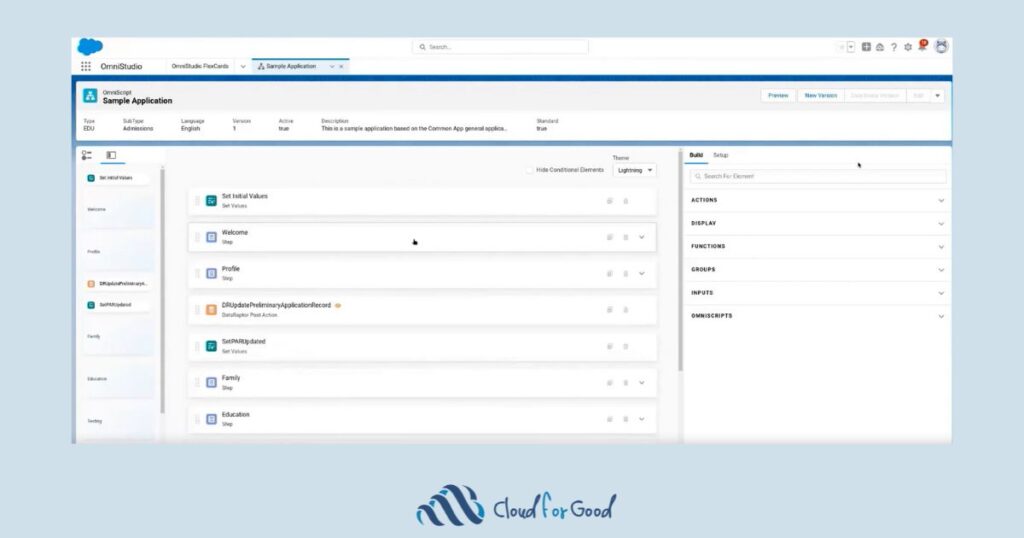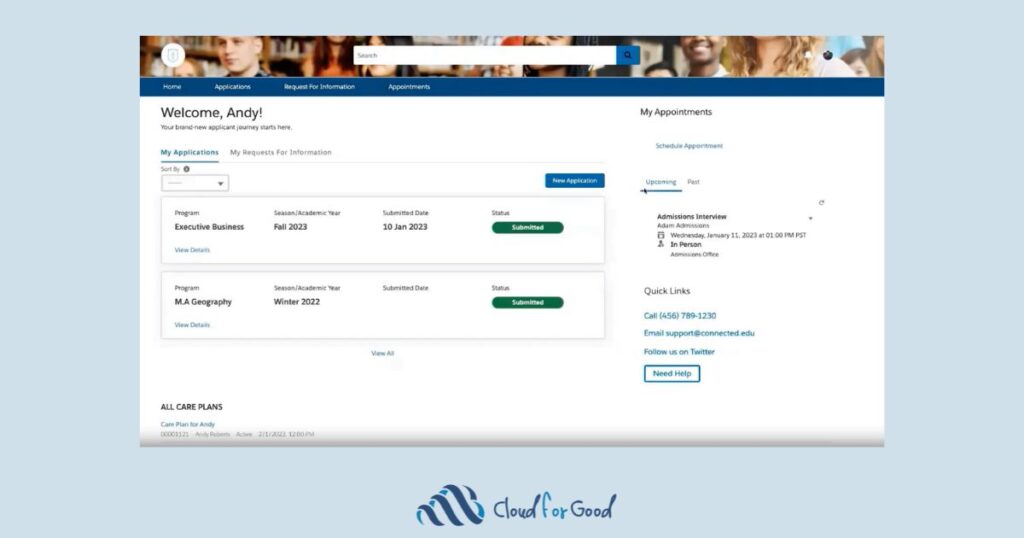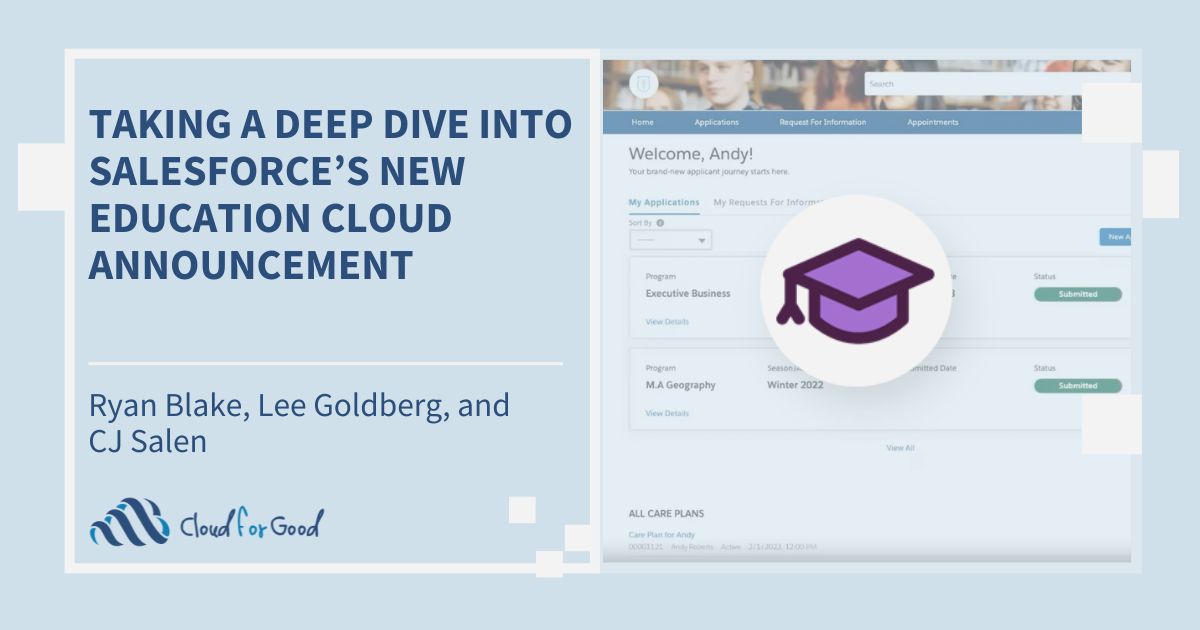Written by Ryan Blake, Lee Goldberg, and CJ Salen.
You’ve heard the news that Salesforce is releasing a new Education Cloud. Many of you may be thinking, “What does this mean?” To really understand it, let’s take a quick look at the evolution of Salesforce in the education industry.
Looking Back at Salesforce in the Education Industry
Salesforce.org started out as a separate entity from Salesforce. They focused on supporting mission-driven organizations, working to put the powerful technology we see supporting large corporations in the hands of nonprofit and educational institutions. This community, comprised of nonprofits and educational institutions, saw a need for different data architecture and functionality from the core solutions to help support common use cases across their industries.
Looking specifically at education, aspects like managing course enrollments, relationships between contacts, and behavioral management were common elements associated with educational institutions that weren’t supported with standard Salesforce products. The solution for this was to provide the .org community with managed packages, which eventually sparked the development of the Education Data Architecture (EDA).
In 2019, when Salesforce.com acquired Salesforce.org, it created the opportunity and capability to influence how core development of the Salesforce platform can happen across all of the cloud offerings. Salesforce, now a single organization, has been focused on leveraging such capabilities and creating industry solutions since that acquisition. Whether it be government, healthcare, financial services, nonprofit, or education, Salesforce now has a solution geared towards your industry as part of their core offerings on the platform furthering their investment in Education Cloud.
The Next Evolution of Education Cloud
Many in the community are utilizing Salesforce due to the continuous investment in innovation and the ability to provide solutions that meet their institutional needs. With the recent announcement of the new Education Cloud built on core functionality, this investment in innovation will continue tenfold. Education Cloud is now part of Salesforce industries, and we will see the same access to products that healthcare or financial services have enjoyed for years. New products, such as EinsteinGPT or Data Cloud and Genie, will be made available more quickly to those in the education space.
Understanding OmniStudio
With the investment into Education Cloud, Salesforce isn’t wasting any time in taking advantage of cutting-edge industry tools to support institutions. These industry clouds are supported by OmniStudio, which is a big part of Education Cloud’s future development.
OmniStudio is a no-code, flexible, digital automation tool. With OmniStudio you can build customized guided user experiences declaratively (in a similar fashion to Flow) and combine or integrate data from sources inside or outside of salesforce via REST API, all without having to write a single line of code. This tool is intended to give institutions what they need to accelerate digital transformation, create a single source of truth for their data, provide superior user experiences, and keep institutions agile and innovative.
As a close partner to Salesforce, Cloud for Good received early access to the new features and was able to certify many of our consultants on OmniStudio. From our perspective, the possibilities are endless with OmniStudio. It provides opportunities that we commonly see through the student experience lifecycle. Things like requests for information forms, scholarship applications, or a full end-to-end application process can all be created declaratively.
Aside from forms, you can take the information you’ve collected in the CRM and display dynamic page layouts where all the relevant data points are at the recruitment, admissions, and success teams’ fingertips, thus reducing the number of clicks to get to key-related records. This all happens with FlexCards, which can also be exported as Lightning Web Components (LWC) and used anywhere you’re leveraging LWCs, offering even more personalized experiences.

A Look into the New Education Cloud Functionality
Beyond OmniStudio, we reviewed and evaluated other features that will be a part of the new Education Cloud. As we alluded to earlier, learner-related objects, like relationships and course connections, will become core to Salesforce. This means there will not be a requirement to install a package or have a trigger model that differentiates from standard Salesforce. This goes for both Recruitment + Admissions and Student Success in that they won’t be product-based solutions. The functionality provided by Admissions Connect and Student Success Hub will be a part of the new Education Cloud where users will be able to take advantage of solutions like Salesforce’s lightning scheduler to set up appointments with their students.
Other functionalities worth noting are Actionable Lists (Beta), where you can join and segment Salesforce data for users to take action on in a single interface, and Care Plans, that’ll support creating tasks for students that can be shared in their portal providing a great use case to support yield initiatives. By moving away from the previous packaged solutions, the new Education Cloud will offer more native features to provide declarative and seamless solutions that can be extended through common features within Industries Cloud.

Important Notes
While there is excitement about the new Education Cloud and the impact it’ll have on higher education, we know there are going to be a lot of questions. The first important thing to note is that Education Data Architecture (EDA), Admissions Connect, and Student Success Hub are still very much an important part of the education community and provide meaningful solutions.
Second, based on what we have seen to date, EDA and the new Education Cloud won’t be able to be active in the same org, which is along similar lines of not having Nonprofit Success Pack (NPSP) and EDA in the same org. Lastly, watching the roadmap will be an essential part of planning for the future, particularly for current EDA users as they consider transitioning to the new Education Cloud.
Much of this information is still new and more details are to be expected, particularly as we approach the Education Summit. We at Cloud for Good are always happy to connect if you have questions about what that’ll mean for your institution, so please don’t hesitate to contact us today.





